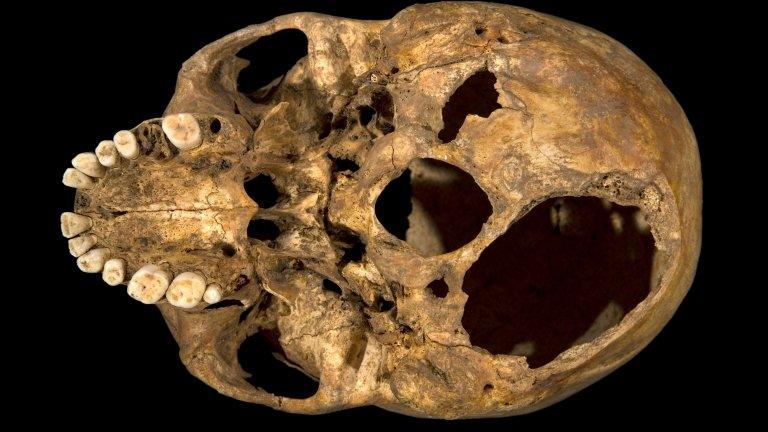Unearthed figurine 'could be from Henry VIII's crown'
- Published
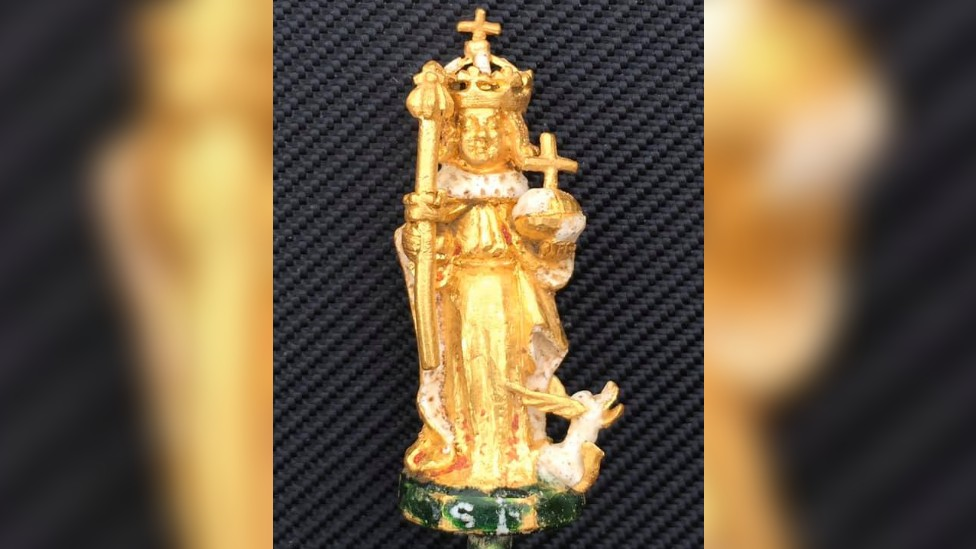
Mr Duckett believes his find is of "national importance"
A gold figurine found buried in a field could be an ornament from Henry VIII's lost crown, according to the metal detectorist who discovered it.
The figure, depicting Henry VI, was found by Kevin Duckett in Northamptonshire in 2017.
After years of research, he now believes it once formed part of the Tudor king's crown, a view shared by some experts.
The British Museum said more research was needed.
Following the Civil War, the crown was melted down on the orders of Oliver Cromwell, but it is believed the figurine - which was one of several adorning the royal treasure - could already have been removed.
Mr Duckett, from Fleckney in Leicestershire, found the object within 30 minutes of searching the field in Little Oxendon.
'Incredible moment'
He said he began digging near a pond with unsettled soil around it.
"I dug down, flipped a clod of soil up, and there sticking out was the glint of gold.
"It was startling to see that little figure, as I wiped the soil off it, staring back at me.
"It was quite the incredible moment," the 49-year-old said.

Mr Duckett has been a metal detectorist for 30 years but said the discovery was "incomparable"
He began his research, and eventually visited Hampton Court Palace, where there is a replica of the crown.
"I was absolutely overwhelmed when I looked at the crown, saw this jewel and realised it was exactly the same [as the one I had discovered].
"It was mind-blowing," Mr Duckett said.
He now hopes his discovery can be added to the Hampton Court Palace collection, alongside its "twin".
Historian and Charles I biographer, Leanda de Lisle, said the figure, along with its companion pieces, could have been removed from the crown before the Civil War.
She also said its discovery near the site of the Battle of Naseby - where Charles and his followers were forced to flee - could also explain how part of the crown jewels ended up there.
But she added: "We can't be certain it is a part of the Tudor crown, but that is possible - which makes it very important.
"Even if it's not, it is still just as interesting. Religious artwork was nearly all destroyed and now we have very little left so this gold figure is incredibly rare."

Mr Duckett created this image to show how similar his find (pictured left) looks compared to the replica

Lost crown of Henry VIII
According to Historic Royal Palaces, the crown was made for either Henry VII or Henry VIII and was worn by the latter on occasions such as the feast of Epiphany
It was later used at the coronations of his children Edward, Mary and Elizabeth
Charles I was painted standing next to it in 1631
It was melted down on the orders of Oliver Cromwell after he abolished the monarchy
Researchers used records and paintings to create what they believe to be a "very accurate" replica, now housed at Hampton Court Palace
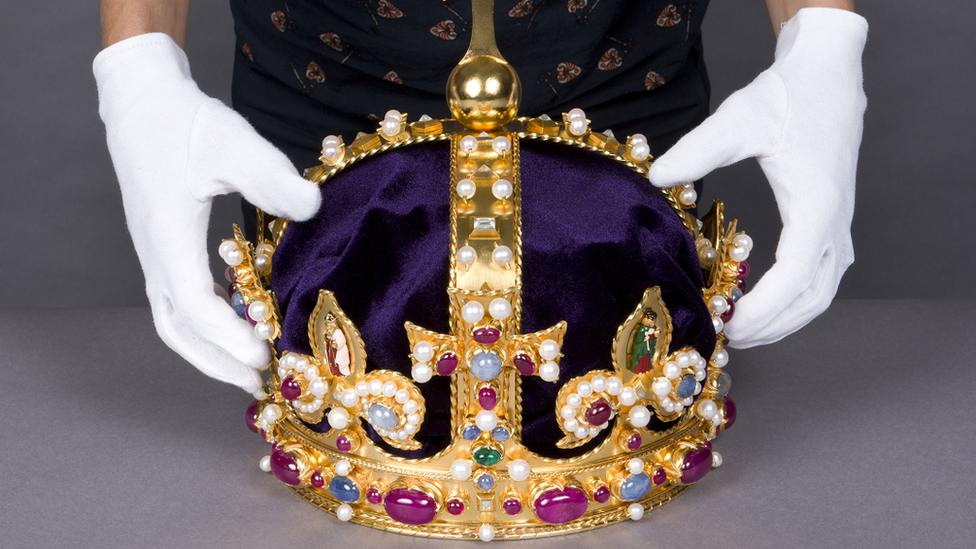
The replica of the crown, decorated with a number of figurines

The British Museum has classed the object as a "pilgrim badge" made in the late Middle Ages.
A spokeswoman said more research was needed to determine whether it was from the missing Tudor crown.
It is due to be assessed by independent valuers and could then be bought by the museum.
Julian Evan-Hart, editor of Treasure Hunting Magazine, said he was "99.9%" sure it was the real thing.
He said it was difficult to value such an object, but he believes it could be worth more than £2m.
"This little enamelled golden figurine, apart from its almost certain historical associations, is a fantastic find indeed," he added.
Lucy Worsley, chief curator at Historic Royal Palaces, said: "It's great news that after centuries of subterranean slumber this little golden figure has been revealed once more, and it's tantalising to imagine its true history. Is this part of a long-lost crown?
"I'm not sure we'll ever know, but even in spite of this it provides an incredible window into the world of the Tudors, and the skill and artistry of sixteenth-century goldsmiths."

Follow BBC East Midlands on Facebook, external, Twitter, external, or Instagram, external. Send your story ideas to eastmidsnews@bbc.co.uk.
Related topics
- Published17 January 2021
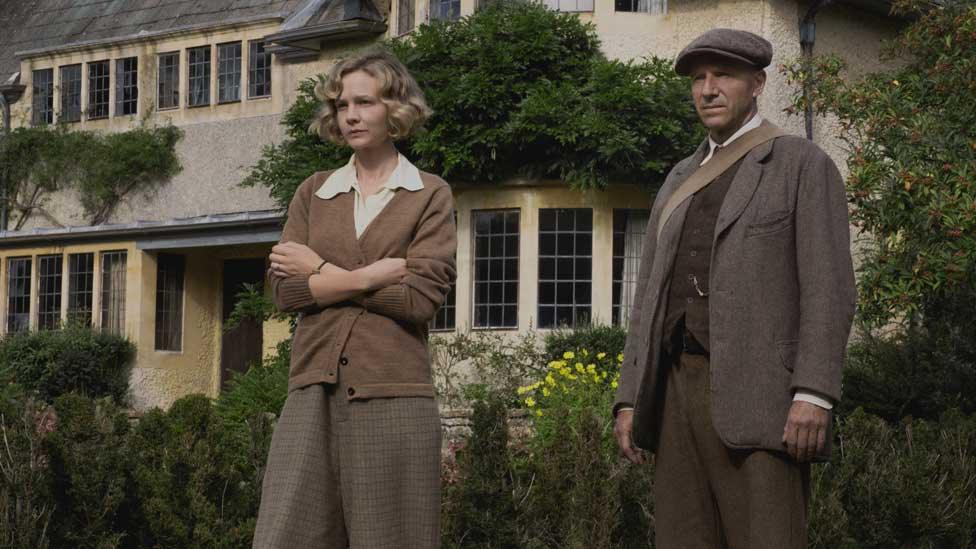
- Published24 September 2020
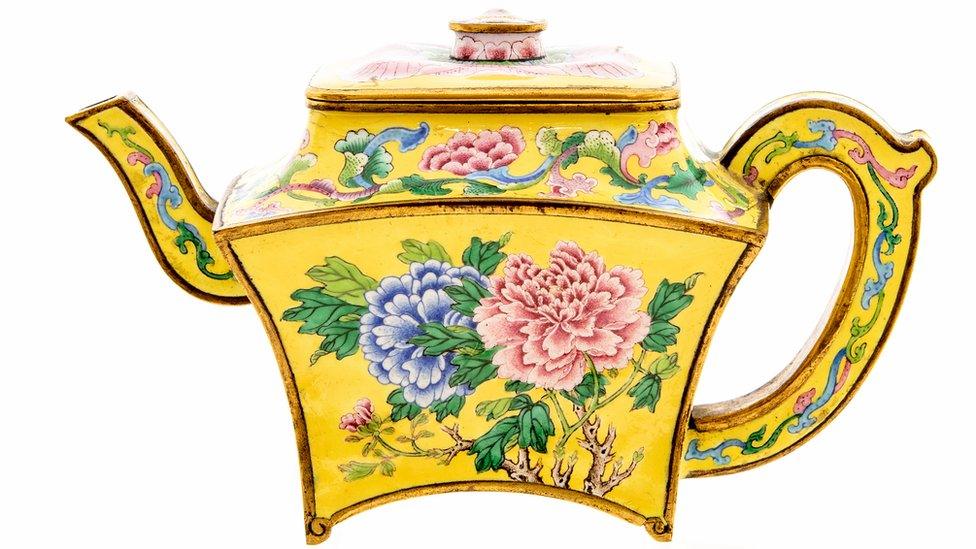
- Published4 February 2013
